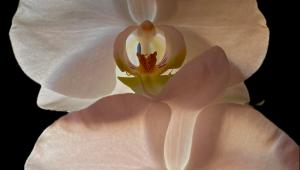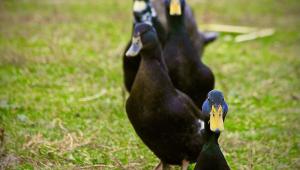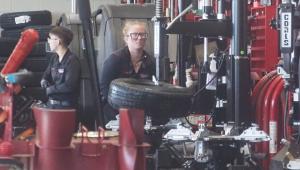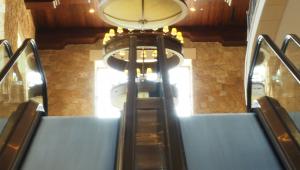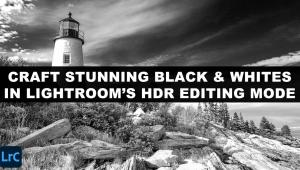More Than Megapixels; 10 Tips For Choosing Your Digital Camera Page 2
6. Price
Ah, it rears its ugly head. The fact is, once you've got your camera search
narrowed down to a few specific models, you'll probably see a wide range
of prices for models with similar specs. Why? Expect to pay more for one of
the more well-known "marquee" brands than a brand known for selling
computers. While they both may give you comparable results, the higher price
for the top names is usually worth the difference in construction, optics, software
and the other little details that they have been dealing with for years. I always
go with the "name" brands--they got that way for a reason.
7. Exposure Control
A critical part of any camera is how much control you have over exposure. Can
you live with just auto or program? Do you need complete manual or can you get
by with aperture and shutter priority? Does it just have auto white balance
or do you have a choice of several modes plus manual? Again, your usage is going
to define how much control you need. Holiday photos of the family can probably
get by with auto everything but you may want more options to cover that once
in a lifetime vacation.
 |
|
|
8. Flash
A critical part of any camera is how much control you have over exposure. Can
you live with just auto or program? Do you need complete manual or can you get
by with aperture and shutter priority? Does it just have auto white balance
or do you have a choice of several modes plus manual? Again, your usage is going
to define how much control you need. Holiday photos of the family can probably
get by with auto everything but you may want more options to cover that once
in a lifetime vacation.
9. Viewfinder
This is a very important point. I prefer a camera that has a "real image
optical viewfinder" over an electronic viewfinder (EVF). Why? Because
if you just have an EVF your screen will usually freeze up after you've
taken a picture, meaning if you try to take photos in rapid succession, you
won't be looking at what you're taking until after you've
already taken it! Also, I've tried taking action photos with one at a
baseball game and the EVF can't keep up with the fast motion. On the other
hand, most EVF cameras will show you 100 percent of the image, while some optical
finders are as low as 80 percent. Again, you decide which is most important
to you based upon you picture taking style.
 |
|
|
10. File Sizes
While most of these cameras shoot different size JPEG files, not all of them
shoot raw. Decide for yourself if this is important to you and you want to take
the needed time to convert and adjust the files. If in doubt, go for a camera
that shoots raw; you don't have to use it, but it's nice to know
it's there.
My Quest For The Perfect Vacation Camera
Much of the reason for the above article is because I recently purchased a new
camera for myself. I grew tired of lugging my bigger DSLRs and lenses around
so I started a search for my "perfect" vacation camera. I'll
avoid the suspense and tell you now--I bought a Canon PowerShot S60. Now
I'm sure you know, because you've already read the enclosed copy,
that as great as this camera is, there are many more options out there, and
your choice will be based upon your needs. With that in mind, let me tell you
my decision making process.
OK, let's start with megapixels. It had to have at least 5. I wanted a
camera that would allow me to print very high quality images if needed. No point
in taking great photos if you can't use the file to make a quality print.
So I set 5 megapixels as the minimum for my needs.
 |
|
|
Next, I looked at lenses. My most important criteria here was how wide the
lens went. It's hard to make wide angle lenses for these cameras because
of the small chip size. Canon has come up with this new lens that is 28-100mm
equivalent, most cameras in this class start at about 38mm, a big difference.
While I wish the longer end went to about 150, my decision was based on the
premise that most "vacation" photos benefit greatly from a wide
angle for more sweeping vistas. The camera also has "stitching"
ability and software that is child's play to use, again great for scenics.
Next, I wanted a camera that gave me the ability to shoot in raw. Even though
I rarely do this, it's nice to know that I can if I have any doubt about
getting the highest quality image I can. This camera can shoot raw and JPEGs
at the same time.
I then looked at size. If the camera's a pain to carry around, I won't
take it. I wanted something I could put in my pocket. I spent a few days on
vacation and just shoved the camera in my pocket whenever we went out. It's
a great feeling not to be encumbered by a heavy camera and bag but knowing you've
got the tools to create high quality images.
It was also very important to me what size media the camera used. I use CompactFlash
cards and Microdrives in my two other cameras. Since I already have four 1GB
cards and many smaller ones, I didn't feel like buying more cards in a
different format. Most cameras come with a card, but it's usually only
about 32MB, only good enough for a few photos. I figure I'd have to spend
another $150 or more just to have adequate storage, even though I have a hard
drive device to download into.
My last consideration was the battery. While I would have preferred to use my
AA batteries, the Canon has its own. And now that I'm used to it, I'm
pretty comfortable with it. I can easily take 200 photos using flash and checking
the finder and the battery charges in 90 minutes so I am not finding this a
drawback. Should I need it, I can get another battery for about $65.
Any complaints? Just a few. I'd prefer a faster lens than the f/2.8-5.3
that ships with it. I'm still adjusting to the "hold shutter release
until focused, then shoot," I don't have it down smoothly yet. And
I'm already saying "shudda waited, the S70
seven-megapixel cameras are now out."
And what pointed me in the direction of this camera? George Schaub's article
in a previous issue of eDigitalPhoto. Keep reading!
Miscellaneous. There are a few other factors to consider when making your digital camera purchase. These may include items like image stabilization, an important consideration with those 10x zoom lenses that are equivalent to about a 400mm lens, Macro mode, how fast the camera can keep shooting in fast action, stitching ability, and others. The whole point I've tried to make during this article is that whether it's film or digital, the very first consideration is the intended usage for the camera. So when someone asks you, "What camera should I buy?" you know the first question you'll be asking him. Now do your homework and get that camera!
- Log in or register to post comments





